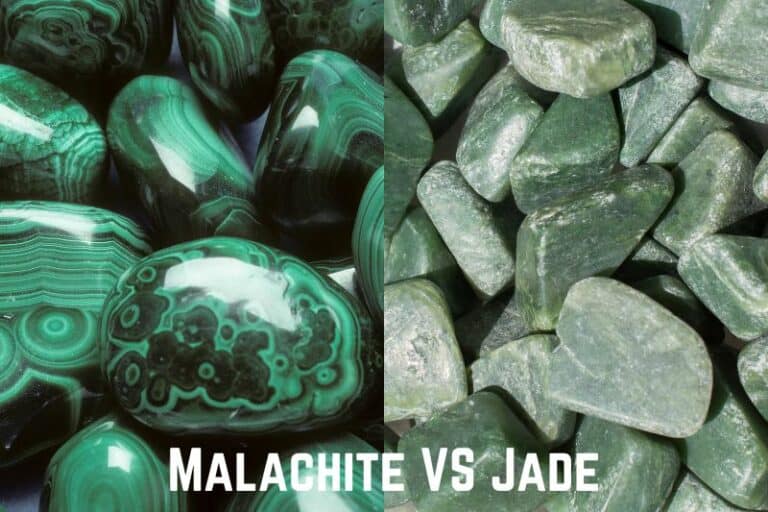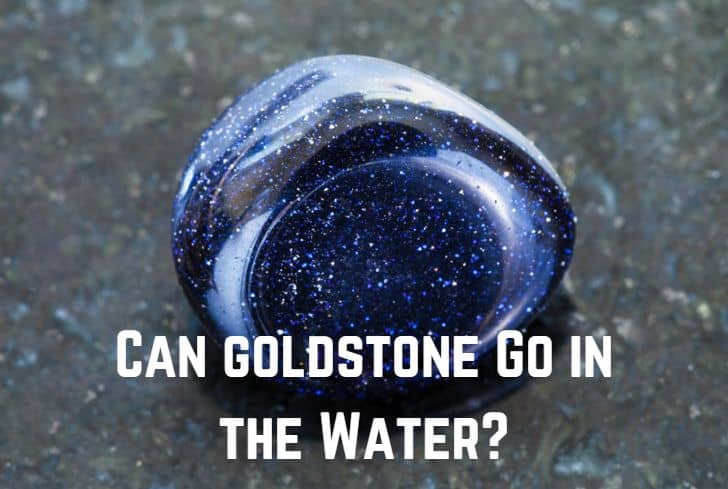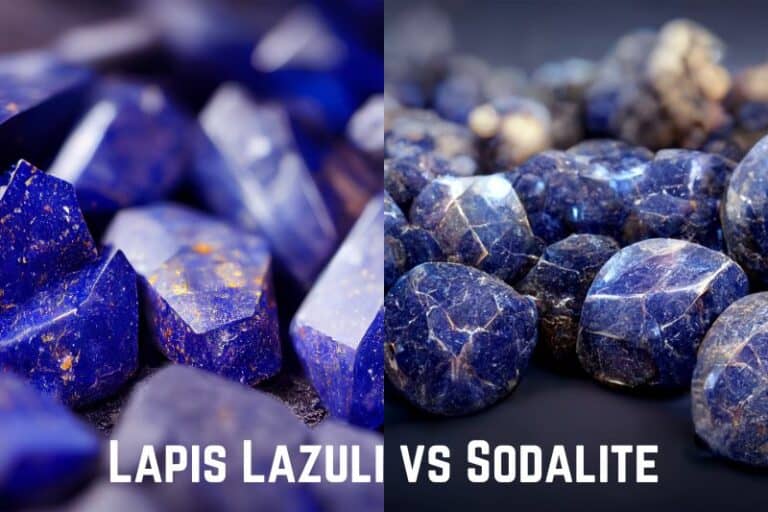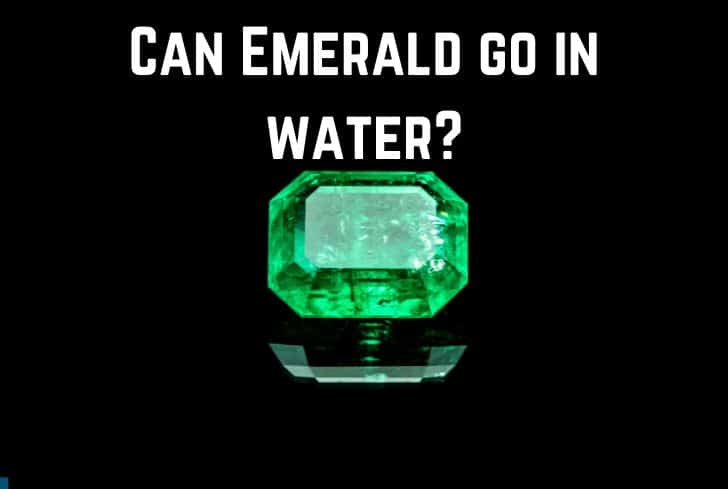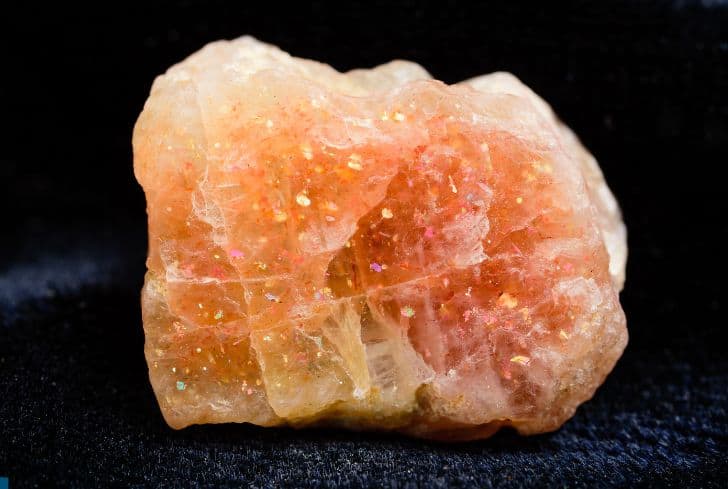Can Red Jasper Go in the Water? (And Salt Water?)
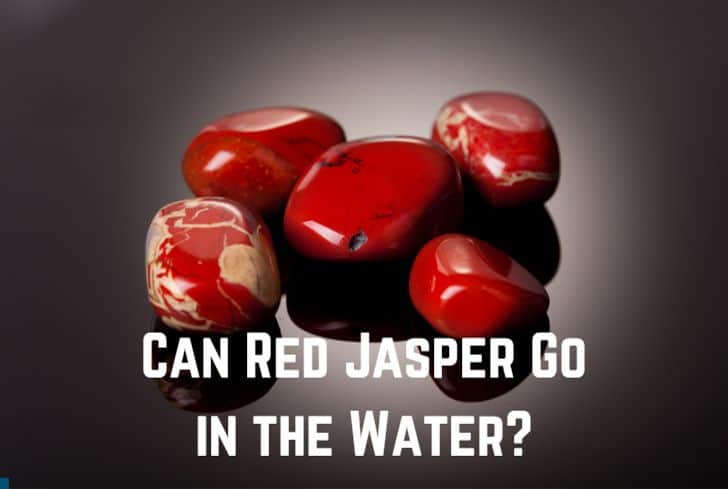
Jasper is a kind of cryptocrystalline quartz. It is an opaque, impure variety of silica (silicon dioxide, SiO2), and is usually red in colour due to iron impurities. It is found all over the world, although certain colors or patterns may be unique to particular locales. Its name comes from the Old French word jaspre, meaning “spotted/speckled stone”.
Have you ever wondered if red jasper can go in the water? In this article, we are going to discuss just that. We will begin by looking at jasper’s properties and uses. Then we will discuss its interaction with water, salt, and sunlight. Finally, we will learn how to take care of jasper.
Read: Can Apatite Go in the Water?
Can Jasper Go in the Water?
Yes, jasper can go in the water. It has a value of 6.5-7 on the Mohs Hardness Scale, which is well above the minimum value required for minerals to survive underwater. However, like all stones, they should not be immersed in water for prolonged periods. Water can damage the structure and tarnish the appearance of the stone.
Mohs Hardness Scale is a relative measure of a mineral’s resistance to scratching. Besides that, it also indicates a mineral’s relationship to water. Usually, a value over 5.0 means that the stone is safe to go in the water.
Softer stones like selenite (value of 2.0) on the Mohs Hardness Scale should never be put in the water. But even harder stones like jasper should not be immersed for too long. Water can enter the crevices of the stone and expand the cracks. These may not be visible at first but can slowly damage the structure of the stone, making it brittle.
Water can also tarnish the appearance of stones. It strips off their polish, making them look a lot duller. Since it encourages fissures, water can also affect the way light bounces off inside the stone, thereby damaging the optical properties and value of the stone.
Properties of Red Jasper
These are the properties of jasper:
- Appearance: Jasper is an opaque variant of quartz that is usually red in colour. This is because of iron inclusions within the stone. However, jasper can also be yellow, brown, green, or even blue in rare situations. Jasper is valued for its beautiful colours and patterns. A type of jasper known as “picture jasper” exhibits combinations of patterns that look like images or scenes when seen on a cut section.
- Composition: Red jasper is an aggregate of cryptocrystalline quartz and/or chalcedony. It is made up of silica (SiO2) and varying kinds of impurities. Red jasper has a hexagonal crystal system and an indiscernible cleavage. In terms of diaphaneity, it is opaque, and it has a vitreous lustre.
- Hardness: Like all types of quartz, jasper is quite a hard mineral. It has a value of 6.5-7 on the Mohs Hardness Scale. Because of this level of hardness, it is strong enough to be accurately cut, which makes it ideal for jewellery and ornament uses. It is also safe to go in the water.
- Formation: As a type of quartz, jasper comes from igneous rocks or environments with geothermal waters. In igneous rocks, jasper forms as magma cools down. Just as water turns into ice, silicon dioxide crystallizes as it cools, with slow cooling creating larger crystals. During the consolidation process, other minerals diffuse with the stone’s discontinuities, giving rise to patterns in the original silica-rich sediment or volcanic ash.
- Sources: Jasper is found all over the world, but certain variants are specific to some locations. These often influence the name of the variant as well. For example, Morrisonite is a type of jasper that comes from Oregon (USA), named after James Morrison whose ranch was the source of the mineral. Bruneau jasper is another popular “picture jasper”, which comes from the Bruneau River in Idaho.
Besides these properties, red jasper is also said to have several spiritual properties. It is believed to target the lower three chakras and helps to keep us grounded. Check out this video by Peace of Energy to have a look at jasper and learn about its spiritual properties.
Uses of Red Jasper
These are the uses of red jasper:
- Gemstone: Red jasper’s hardness and its ability to take an excellent polish make it a good choice for all types of jewelry. It is also easy to take care of, as we will learn in the later part of this article.
- Spiritual: Like many crystals, jasper is valued for its healing properties. It is considered a supreme nurturer that helps its owners with balance, stamina, and courage. It is also known as a stone of endurance.
- Ornament: Besides jewelry, jasper is also used in various ornaments. It is cut into cabochons, tumbled stones, and other lapidary projects. It is also used to make other decorative objects such as ashtrays or bookends.
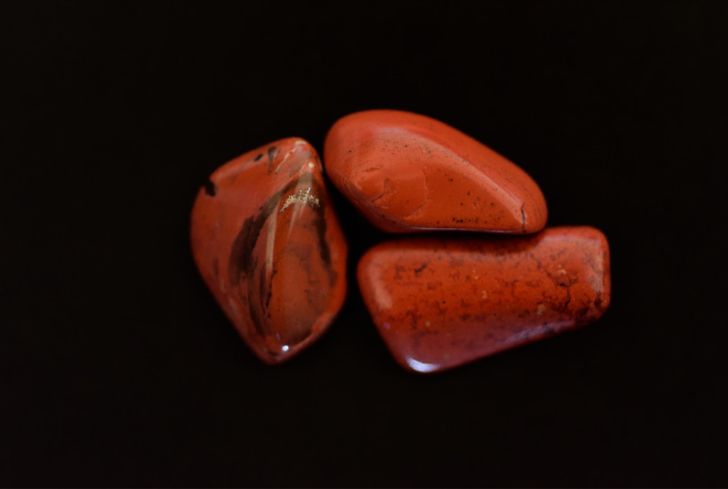
Can Dalmatian Jasper and Kiwi Jasper go in the Water?
Yes, both dalmatian jasper and kiwi jasper can go in the water. Like other variants of jasper, they have a value of 6.5-7 on the Mohs Hardness Scale, meaning that they are quite hard and are safe underwater. However, like all stones, they should not be immersed in water for too long.
Dalmatian jasper comes from Chihuahua, Mexico, and it gets its name due to its spotted appearance, similar to that of a Dalmation dog. Kiwi jasper is sea green with black crystal flecks all over the stone.
Both these variants of jasper are highly valued for their appearance, and they are often turned into beautiful tumbled stones or cabochons, which are used for healing purposes. They are both safe to go in the water, having a value of 6.5-7 on the Mohs Hardness Scale.
However, you should not immerse them for too long, as prolonged immersion can damage their structure and tarnish their appearance.
Can Jasper go in Salt Water?
No, jasper should not be immersed in salt water. Jasper has a value of 6.5-7 on the Mohs Hardness Scale, so it can survive underwater, but even then, it should not be immersed for too long. When we bring salt into the mix, it makes the corrosive effect of water even worse.
Salt, when dissolved in water, can seep into the crevices of the stones. Here, these particles stay even after the water evaporates, expanding the crevices of the stone. These can slowly damage the structure of the stone, making it brittle. Like regular water, salt water can also tarnish the appearance of the stone by stripping off its polish.
Salt can also react adversely with the elements of the mineral. This is especially true for minerals like jasper, which contain iron impurities. Saltwater hastens the rusting process by making iron lose its electrons more easily.
Can Jasper go in the Sun?
It is not recommended to put jasper out in the sun. Although recharging crystals in sunlight is a popular practice, it is not recommended for all crystals. Jasper is a variant of quartz, which is prone to get damaged by the sun. Excessive sunlight can make the stone’s color fade.
One of the most common ways of recharging stones is by leaving them out in the sun. However, you must always look at the properties of the stone before pursuing any recharging method, as they can be damaging to the stone.
Jasper is a kind of quartz, which is not safe to go in the sun. Although leaving jasper out in the sunlight for a short period may not harm it, it is best to keep it away from the sun altogether. You don’t want to risk getting the stone’s beautiful color faded.
Instead, you can try other ways of recharging the stone, such as leaving it out in the moonlight, smudging it with sage, etc.
How to Cleanse Red Jasper?
Follow these steps to clean red jasper:
- Mix a soft detergent/soap with lukewarm water.
- Immerse the red jasper in the solution for a few minutes, scrubbing it with a soft brush.
- Rinse the stone under running water to get rid of all the soap.
- Let it air dry. Make sure you twist it a few times to remove all water from the crevices.
Red jasper is a variant of quartz and has a value of 6.5-7 on the Mohs Hardness Scale. Because of its good hardness, it is ideal for use in jewelry and is quite easy to take care of. However, you must not use abrasive cleaners or harsh scouring pads containing bleach on it.
Conclusion
In this article, we have discussed whether red jasper can go in the water or not. Given its value of 6.5-7 on the Mohs Hardness Scale, red jasper is safe to go underwater, but it should be immersed for too long. We began by looking at the properties and uses of red jasper. Then we discussed its interaction with various materials. Finally, we learned how to take care of it.

